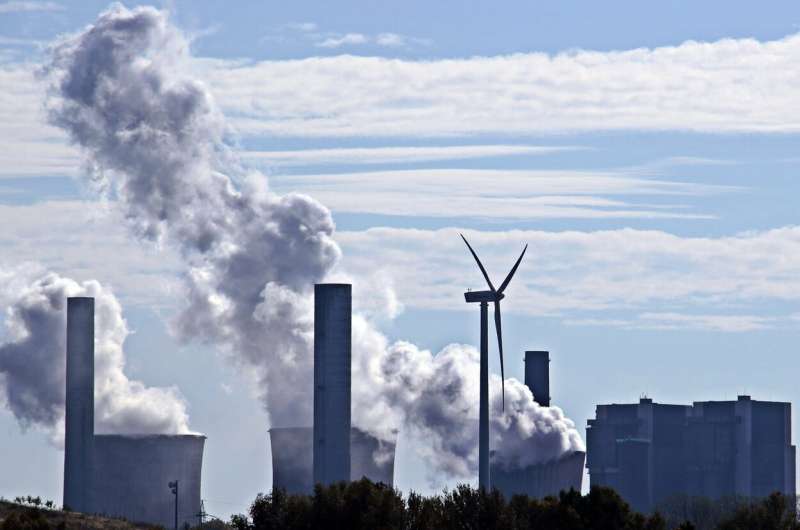This article has been reviewed according to Science X's editorial process and policies. Editors have highlighted the following attributes while ensuring the content's credibility:
fact-checked
trusted source
proofread
Focus on cities will boost benefits of air pollution action for most vulnerable

Meeting UK air pollution targets by focusing on urban areas will maximize health benefits for the most deprived communities.
A study led by Imperial College London researchers shows that reducing typically urban sources of fine-particle air pollution like roads, wood burners, and machinery would also reduce inequalities in how different communities suffer the health impacts.
Air pollution can reach the lungs, causing short-term irritation and more harmful long-term impacts on heart and lung function. For people with existing conditions like heart failure and asthma, this can worsen already serious health problems. Residents or workers in more deprived areas are more likely to suffer these conditions, and as such are disproportionately impacted by air pollution.
The new study shows that while there are many ways to reduce the UK population's exposure to air pollution overall, focusing on these typically urban sources benefits deprived areas more, reducing the health inequalities across the country. The research is published in Environmental Advances.
Lead researcher Dr. Huw Woodward, from the Centre for Environmental Policy at Imperial College London, said, "People facing higher air pollution in deprived areas suffer health inequalities, which have a profound impact on their quality of life. Reducing air pollution will benefit everyone, but thinking more deeply about how we get there can also help us alleviate the impact on the most vulnerable in society."
Reducing bias
There are several types of air pollution, including nitrous dioxide and fine particles. This study focused on a type of fine-particle pollution called PM2.5 (pollution particles that are less than 2.5 microns across).
The UK Environment Act of 2021 set a target for cutting the population's exposure to PM2.5 by 35% by 2040, compared to 2018 levels. In practice, this means reducing the sources of the pollution, which include industry, road transport, energy production and agriculture.
Experts and policymakers use models to explore different ways of reaching the target by reducing pollution from these sources by different proportions. While all reductions in pollutant emissions will reduce the population's exposure, previous studies have not considered how different ways of reaching the target would influence the health inequality.
To track how different scenarios impact the inequality, the team created a new metric, called the Indicator of Exposure Bias (IoEB). They paired this with the UK Integrated Assessment Model, used to investigate the impact of future emissions scenarios on air quality in England.
The team modeled several of these scenarios, including two that meet the 2040 target, and used the IoEB to assess their impact on the exposure bias. The successful scenarios both achieved the target by reducing PM2.5 sources from all sectors, but one focused more on urban sources, including road transport and wood burners.
While both these scenarios reduced the exposure bias, the one focusing more on urban sources had a larger impact, reducing the bias by 59% (compared to 43% for the other scenario).
North-south divide
There is also a bias between Southern and Northern areas of England, with the former experiencing higher levels of PM2.5 air pollution. This bias is due to the south receiving a greater proportion of pollution from shipping channels and continental neighbors. The south of England has fewer deprived areas than the north, and as such this north-south divide in PM2.5 from non-UK sources reduces the overall bias towards deprived areas.
Despite this, deprived areas still experience higher levels of PM2.5 pollution. Of the sources under English control, the bias towards deprived areas is greater than that assessed by considering all sources including those from outside of the UK.
The study looked at pollution at the level of populations, as individual exposure is very difficult to estimate accurately.
The team believes their new measure can be applied to different countries or regions using models that estimate population exposure and socioeconomic status. This could allow policymakers to identify the sectors which contribute disproportionately to the bias in exposure and to identify effective strategies for reducing this bias.
More information: Huw Woodward et al, Assessing PM2.5 exposure bias towards deprived areas in England using a new indicator, Environmental Advances (2024). DOI: 10.1016/j.envadv.2024.100529
Provided by Imperial College London





















